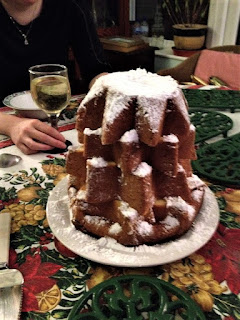Terrorist attack at Fiumicino
Horrifying end to Christmas celebrations
The peace of Italy's festive celebrations was shattered by a devastating terrorist attack on this day in 1985 when Arab gunmen opened fire in the main departure hall at Rome's Leonardo da Vinci-Fiumicino Airport. The attack, which claimed the lives of 16 people, took place shortly after 9.05am, when the four perpetrators approached the check-in desks of Israel's El Al Airline and the United States carrier Trans World Airlines. Israeli secret services were aware that an attempt either to hijack a plane or stage an attack on the ground was being planned between December 25 and 31 in Rome and an Israeli security officer became suspicious of the quartet as he watched their movements in the departure hall. However, when he stepped forward to challenge them, they produced assault rifles and began firing, at the same time throwing grenades. The Israeli officer was killed and in the ensuing gunfight, involving more Israeli security staff and Italian police, some 12 passengers were fatally wounded. They included Americans, Mexicans, Greeks, Italians and at least one Algerian. Three of the gunmen were shot dead and a fourth, 18-year-old Ibrahim Khaled, was captured by police. Read more…
_______________________________________
Pope John Paul II’s prison visit
Pope came face to face with his would-be killer
Pope John Paul II visited Rebibbia prison on the outskirts of Rome on this day in 1983 to forgive formally the man who had tried to assassinate him. Two years previously the Pope had been shot and critically wounded in St Peter’s Square by Mehmet Ali Agca, a Turkish member of a fascist group known as Grey Wolves. John Paul II had been rushed unconscious to hospital with bullet wounds to the abdomen, colon and small intestine and had to have five hours of surgery to repair the damage. Agca was caught and restrained by bystanders until the police arrived. He was tried and sentenced to life imprisonment. John Paul II visited Agca on 27 December 1983 in prison in Rebibbia, a suburb on the northeastern edge of Rome. They spoke privately for about 20 minutes and afterwards the Pope said he had pardoned his would-be killer. Agca had previously escaped from a Turkish prison where he had been serving a sentence for murdering a journalist. He was deported to Turkey at the end of his jail sentence in Italy and went on to serve another ten years in prison. On 27 December 2014, 33 years after the shooting, Agca came to the Vatican in Rome to lay white roses on Pope John Paul II’s tomb. Read more…
__________________________________________
Tito Schipa – operatic tenor
Star on two continents whose voice divided opinions
Tito Schipa, one of the most popular opera singers in the first half of the 20th century who sang to packed houses in the United States and South America as well as in Italy, was born on this day in 1888 in Lecce. The tenor, whose repertoire included Verdi and Puccini roles in the early part of his career and later encompassed works by Donizetti, Cilea and Massanet, rose from modest beginnings to find fame with the Chicago and New York Metropolitan opera companies in America. He also appeared regularly in Buenos Aires in Argentina and later in his career starred regularly at Teatro alla Scala in Milan and the Rome Opera. Some critics said his voice lacked power and had too narrow a range for him to be considered a genuinely great tenor, yet he overcame his perceived limitations to become extremely popular with the public wherever he performed. Schipa was born Raffaele Attilio Amedeo Schipa in the Le Scalze district of Lecce, a fairly working class neighbourhood in the Puglian city. His family were of Albanian heritage. His father was a customs officer. His talent was first noted by a primary school teacher in Lecce. Read more…
_________________________________________
Saint Veronica Giuliani
Life of compassionate nun is still inspiring others
Nun and mystic Veronica Giuliani was born on this day in 1660 in Mercatello sul Metauro in the Duchy of Urbino. After she had spent her whole life devoted to Christ, the marks of the crown of thorns appeared on her forehead and the signs of his five wounds on her body. She was subjected to a rigorous testing of her experience by her bishop but, after he decided the phenomena were authentic, he allowed her to return to normal convent life. The nun was made a saint by Pope Gregory XVI in 1839, more than 100 years after her death. Veronica was born Orsola Giuliani, the youngest of seven sisters. By the time she was three years old she was demonstrating compassion for the poor, often giving away her own food and clothes. When her father decided she was old enough to marry, she pleaded with him to be allowed to choose a different way of life and, at the age of 17, in 1677 she was received into the monastery of the Capuchin Poor Clares in Città di Castello in Umbria. She took the name of Veronica and lived as a sister in the convent for the next 50 years. Sister Veronica was made a novice mistress at the age of 34. Read more…
.jpg)




.jpg)


.JPG)
.jpg)
.jpg)
.jpg)
.JPG)



.jpg)
